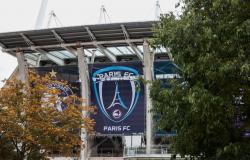
The drama which played out at Place de la Madeleine in Paris on Tuesday October 15, where a cyclist tragically lost his life under the wheels of an angry motorist, crystallizes a deep malaise which is today fracturing the capital. It is not only the fatal outcome of a conflict, but the reflection of an underlying tension which opposes cyclists, motorists and pedestrians, in a city where traffic becomes a field of daily confrontation. Cyclists’ associations express their sadness and anger, accusing motorists of increasing contempt towards those who have chosen cycling as a mode of travel. This drama urgently raises the question of cohabitation in public space.
For several years, Paris has been engaged in a radical transformation of its infrastructure, aiming to reduce the carbon footprint, promote “soft mobility” and encourage the use of bicycles. These efforts, although encouraged by international ecological imperatives, have profoundly changed the appearance of the city and the habits of its inhabitants. The bicycle has become the third mode of transport for Parisians, and the municipality has been able to impose a paradigm shift in favor of sustainable mobility. However, this new urban landscape, far from easing tensions, seems to fuel them. Motorists, often singled out for their contribution to pollution, see their circulation spaces reduced, while pedestrians denounce the invasion of sidewalks by unruly cyclists. Basic safety rules are too often ignored, in the name of an alleged moral superiority linked to ecological virtue.
A necessary rebalancing for better cohabitation
The current situation reveals a deep malaise that cannot be ignored. At a time when Paris is transforming, it is urgent to restore a balance between these different modes of transport. The promotion of cycling must not be to the detriment of harmonious coexistence between all users of public spaces. To do this, several concrete measures must be considered.
First of all, the introduction of a “riding license” for cyclists could help ensure that they know and respect the rules of the Highway Code, like motorists. This permit, simple to obtain after short training, would guarantee that each cyclist is aware of the dangers and obligations in terms of traffic. It could also make it possible to make bicycle users more responsible and to effectively sanction dangerous behavior.
Next, it is necessary to strengthen controls and sanctions for cyclists who break the rules, particularly those who ignore lights or ride dangerously on sidewalks. Video surveillance, coupled with artificial intelligence, could play a major role in this control. By analyzing user behavior in real time, these technologies would make it possible to automatically detect offenses, without immediate human intervention. This would provide municipal police with an additional tool to more effectively enforce traffic rules, even in areas where human presence is limited. AI would also make it possible to make a precise diagnosis of the most sensitive areas, thus facilitating decision-making to strengthen security. These technologies would guarantee constant monitoring, without being intrusive, by optimizing resources and ensuring widespread compliance with the rules by all users.
Furthermore, Parisian urban planning must adapt to this new reality: the creation of infrastructure must go further, with better protected cycle pathsfar from pedestrian and automobile areas. Shared priority spaces, where speed would be strictly limited, can be considered in certain neighborhoods in order to encourage better coexistence between pedestrians and cyclists.
The challenges of the municipal elections: reconciling Paris and its users
In addition to these regulatory measures, positive incentives can be implemented. Rule-abiding cyclists could, for example, benefit from reductions on their bicycle insurance or bonuses for the purchase of safety equipment. These initiatives would aim to promote civic and responsible behavior on the roads.
Finally, the upcoming municipal elections will have to place this issue at the heart of the debates. The candidates will have to propose balanced solutions, which will prevent tensions from degenerating into irreparable tragedies. Paris must remain a city where everyone can travel in complete safety, whatever the mode of transport chosen. The challenge goes beyond that of mobility: it is about re-establishing “living together” in our capital, by finding concrete solutions so that pedestrians, cyclists and motorists can share the road with respect for each other.
_____
AlexandreLazarAnd I is a lawyer at the Paris Bar, specializing in digital law. He heads the officeLazarAnd I
Lawyers, located in Paris, and has built a solid reputation in areas related to data protection and the regulation of new technologies.
Canada





